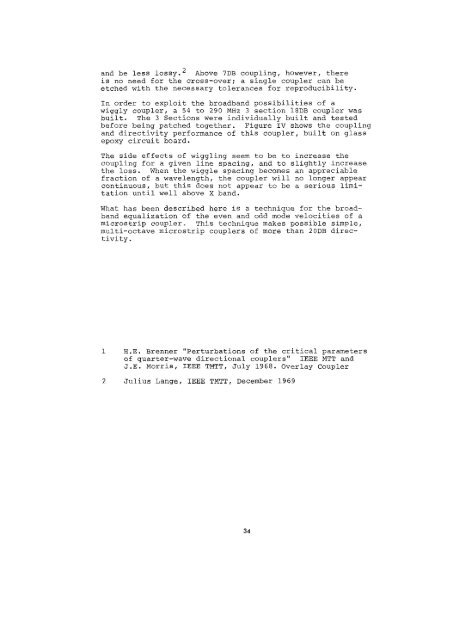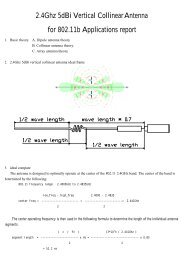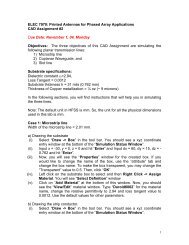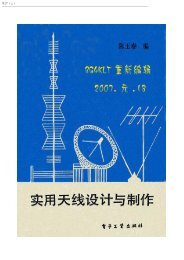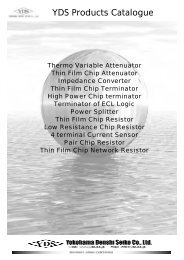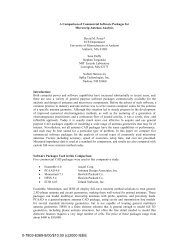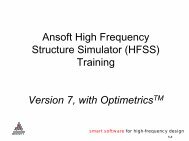A High Directivity Microstrip Coupler Technique - IEEE Xplore
A High Directivity Microstrip Coupler Technique - IEEE Xplore
A High Directivity Microstrip Coupler Technique - IEEE Xplore
You also want an ePaper? Increase the reach of your titles
YUMPU automatically turns print PDFs into web optimized ePapers that Google loves.
and be less 10SSY.2 Above 7DB coupling, however, there<br />
is no need for the cross-over; a single coupler can be<br />
etched with the necessary tolerances for reproducibility.<br />
In order to exploit the broadband possibilities of a<br />
wiggly coupler, a 54 to 290 MHz 3 section 18DB coupler was<br />
built. The 3 Sections were individually built and tested<br />
before being patched together. Figure IV shows the coupling<br />
and directivity performance of this coupler, built on glass<br />
epoxy circuit board.<br />
The side effects of wiggling seem to be to increase the<br />
coupling for a given line spacing, and to slightly increase<br />
the loss. When the wiggle spacing becomes an appreciable<br />
fraction of a wavelength, the coupler will no longer appear<br />
continuous, but this does not appear to be a serious limi–<br />
tation until well above X band.<br />
What has been described here is a technique for the broadband<br />
equalization of the even and odd mode velocities of a<br />
microstrip coupler. This technique makes possible simple,<br />
multi-octave microstrip couplers of more than 20DB directivity.<br />
1 H.E. Brenner “Perturbations of the critical parameters<br />
of quarter-wave directional couplers” <strong>IEEE</strong> MTT and<br />
J.E. Morris, <strong>IEEE</strong> TMTT, July 1968. Overlay <strong>Coupler</strong><br />
2 Julius Lange, <strong>IEEE</strong> TMTT, December 1969<br />
34


